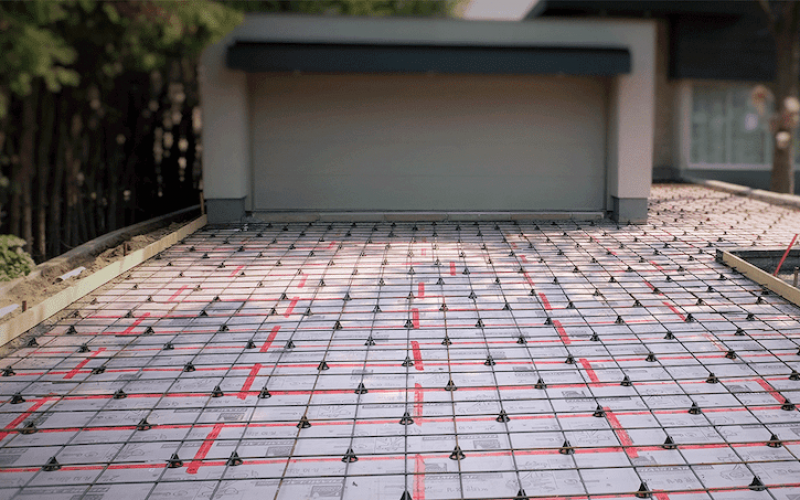Tired of shoveling snow or battling icy driveways every winter? A heated driveway system might be the solution you’ve been dreaming of. Designed to melt snow and ice automatically, these systems make winter mornings safer and more convenient—without lifting a shovel.
In this post, we’ll break down what heated driveways are, how they work, the different types available, and whether one might be right for your home.
What Is a Heated Driveway?
A heated driveway—also called a radiant or snow-melt system—is a driveway equipped with a built-in heating system that melts snow and ice as it falls. Whether installed under concrete, asphalt, or pavers, these systems use electric cables or heated fluid tubing to keep your surface warm and clear during winter weather.
Think of it as radiant floor heating, but for the outdoors.
How Do Heated Driveways Work?
Most systems use sensors to detect moisture and temperature. When snow starts falling and temps drop below a certain threshold (typically 38–39°F), the system kicks on automatically to melt snow before it has a chance to accumulate.
Two Main Types:
-
Electric Systems
These use heating cables or mats that generate heat when powered. They’re easy to install and ideal for smaller driveways or moderate snowfall areas. -
Hydronic Systems
These circulate a warm water-antifreeze solution through PEX tubing under the driveway surface. They’re more energy-efficient for larger areas but have higher upfront installation costs.
Benefits of a Heated Driveway System
-
No more shoveling
Say goodbye to back-breaking work or hiring a snow removal service. -
Increased safety
Prevent slips and falls on icy surfaces—especially helpful for families with kids or elderly members. -
Protects your driveway
Reduces freeze-thaw damage and eliminates the need for corrosive salt. -
Boosts home value
A luxury feature that can attract future buyers and boost curb appeal. -
Eco-friendly options available
Some systems can be powered with solar energy and reduce harmful salt runoff into the environment.
What to Consider Before Installing
-
Installation Cost:
Expect to pay anywhere from $5,000 to $25,000+, depending on size, surface type, and system. -
Energy Use:
Electric systems can be more costly to run, especially in snowy regions. Hydronic systems are more efficient but need a boiler and pumps. -
Driveway Replacement May Be Required:
Retrofitting a system often means tearing up and repouring your driveway. -
Maintenance:
Generally low, but if a part fails, repairs can be expensive and invasive.
Cost Breakdown
| Feature | Electric | Hydronic |
|---|---|---|
| Install Cost | $5,000–$15,000 | $10,000–$25,000+ |
| Operating Cost | ~$0.50–$1/hr | Depends on fuel source |
| Best For | Small driveways, quick installs | Large areas, long-term use |
Want a budget-friendly alternative? Portable heated driveway mats start under $300 and are great for spot treatments like walkways or steps.
How Is It Installed?
Here’s a quick look at the installation process:
-
Remove driveway surface (if retrofitting).
-
Lay insulation to prevent heat loss.
-
Install heating elements (cables for electric or tubing for hydronic).
-
Connect to sensors and controls.
-
Re-pour concrete or asphalt and finish the surface.
Installation typically takes a few days to a week, and it’s best done by licensed pros.
Which System Is Right for You?
-
Choose electric if you have a small-to-medium driveway and want quick heat-up and lower upfront costs.
-
Go with hydronic for larger areas, long-term efficiency, and lower energy bills over time.
-
Use portable mats for temporary snowmelt without construction.
Final Thoughts
A heated driveway system is more than just a winter luxury—it’s a smart, long-term investment in safety, convenience, and home value. Whether you face occasional flurries or relentless snowfall, the right snow-melt solution can completely change how you experience winter.
If you’re ready to ditch the snow shovel and step into a worry-free winter, a heated driveway might be your next best upgrade.





